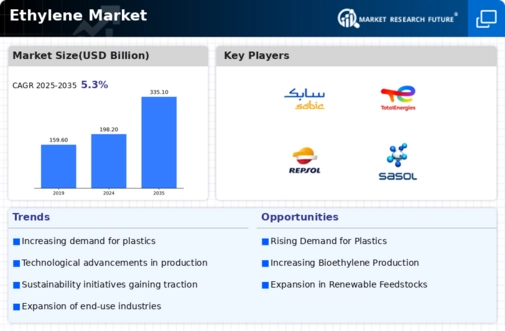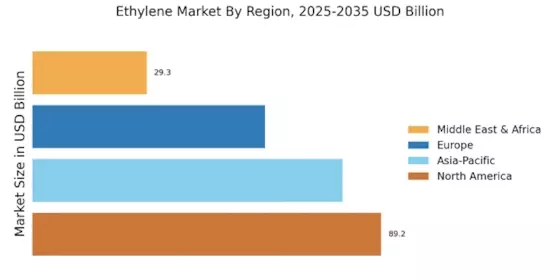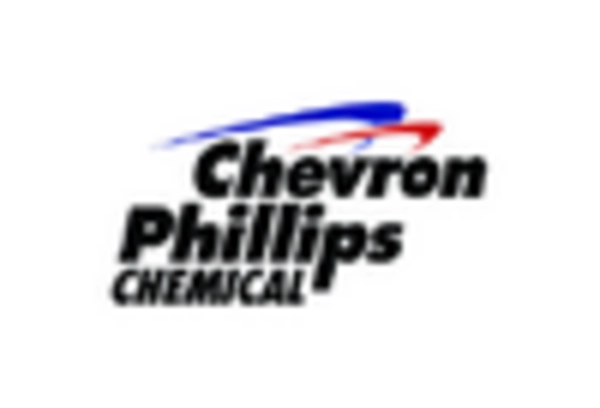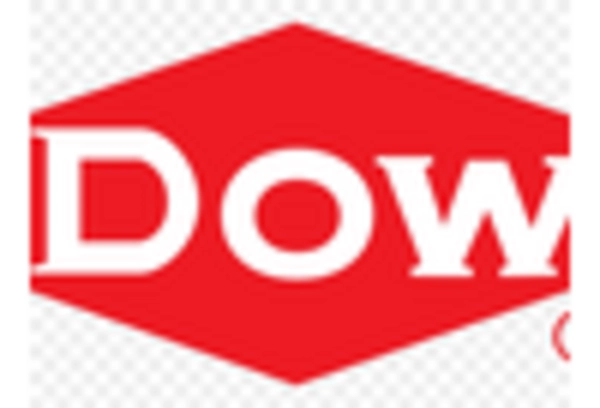Key market players are emphasizing significantly on R&D for increasing their product offerings, which will further help the Ethylene Market to grow considerably. Market players are adopting several business development strategies such as acquisitions, mergers, collaborations, and partnerships to enhance their market presence and acquire a larger customer base. To survive in the competitive market, industry players must provide cost effective products.
The Ethylene Market is very competitive with market players trying to develop unique and innovative products and solutions, which could render the competitors’ offerings obsolete. The competitive environment is likely to grow further owing to rising technological advancements. Some of the key players operating in the Ethylene Market are SABIC, Dow, Exxon Mobil Corporation, Shell Global, China Petrochemical Corporation, Chevron Phillips Chemical Company LLC, TotalEnergies, LyondellBasell Industries Holdings B.V, Repsol, BASF SE, Westlake Corporation, Sasol, Mitsubishi Chemical Corporation, NOVA Chemicals Corporate (Canada). To increase their global reach and client base, key firms are concentrating on acquisitions and product innovation.
SABIC: Saudi Basic Industries Corporation, or SABIC for short, is a leading global manufacturer of plastics and diverse chemicals. Since its founding in 1976, SABIC has expanded to rank among the biggest and most significant businesses in the Middle East. An extensive overview of SABIC is given in this corporate profile, which also includes information on the company's history, mission, major business sectors, global presence, sustainability initiatives, and dedication to innovation and excellence. As the globe works to contain the outbreak, the ethylene market will likely see ongoing attempts to strengthen supply chain resilience and prepare for any future crises.
The goal of SABIC is quite clear and simple: to improve people's quality of life by offering creative, sustainable chemical and plastic solutions. The company is to be a world leader in chemicals by continuously providing value to its clients, investors, and the general public. This vision fuels SABIC's dedication to quality, innovation, and ethical business conduct. Ethylene Market, propylene, and a range of intermediate chemicals utilized in the automotive, building, and healthcare industries are just a few of the chemical compounds produced by SABIC. With activities and facilities spread over more than 50 countries, SABIC has a wide worldwide presence.
The Americas, Europe, Asia, and the Middle East are the regions where the company is most prevalent. With such a wide reach, SABIC is able to offer customers innovative solutions that are customized to meet their unique demands on a global basis.
Dow: Leading the way in materials science worldwide, Dow offers a vast array of cutting-edge goods and services that affect nearly every facet of contemporary living. With more than a century of experience, Dow has made a name for itself as a leader in the chemical business, dedicated to advancing development and sustainability. With a focus on the company's history, mission, major business sectors, global reach, sustainability initiatives, and commitment to innovation, this profile provides a comprehensive look at Dow Inc. Dow's origins can be traced to Midland, Michigan, USA, where Herbert H. Dow established the business in 1897.
At first, the company concentrated on producing bromine, a valuable chemical that is utilized in many different industries. With time, Dow broadened its offerings and competencies, becoming a leader in the creation of materials, polymers, and synthetic chemicals that have transformed numerous industries. The goal of Dow is to fervently develop innovations for stakeholders in the nexus of physics, biology, and chemistry. The company sees a sustainable future in which people and the environment benefit from its goods and solutions. Dow bases its decisions and activities on its dedication to sustainability, innovation, and teamwork.
Dow is a multinational corporation that operates in over 175 countries. The organization has an extensive global network of offices, R&D centers, and production sites. Because of its wide global reach, Dow is able to provide consumers with services in a variety of areas and adapt to changing needs both locally and globally.Exon Mobil Corporation formed a joint venture, Gulf Coast Growth Ventures, with SABIC in June 2019, and they announced plans to build a chemical complex and an ethane steam cracker in Texas.
The facility is designed to produce feedstocks for a range of products, such as building materials, packaging and automotive coolants. During its life, the facility will include two polyethylene units and a mono-ethylene glycol unit.


















Leave a Comment